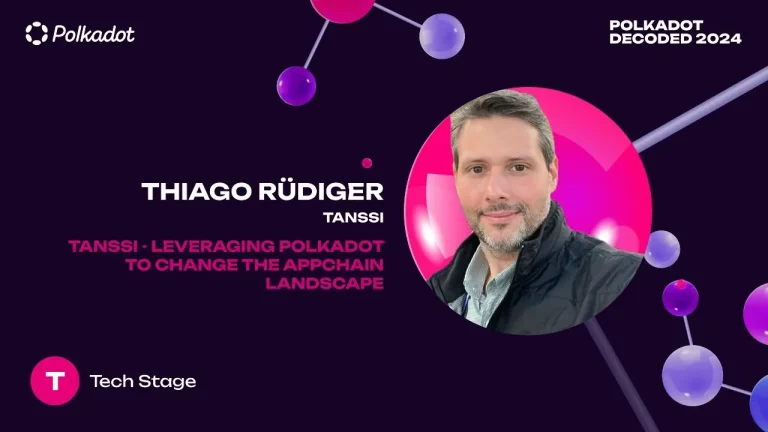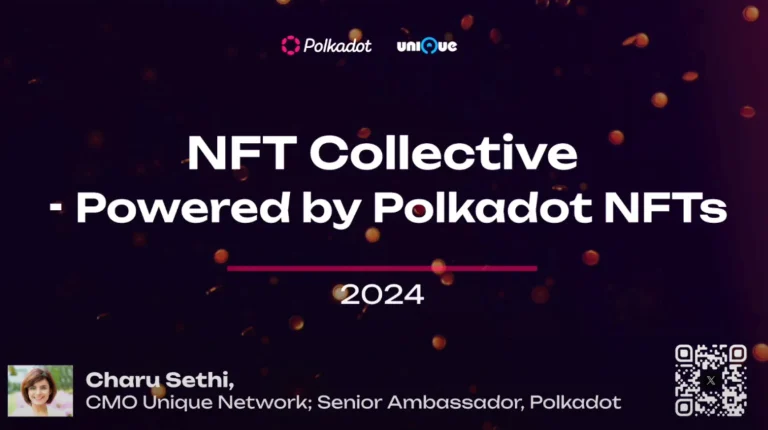In a comprehensive presentation at Polkadot Decoded 2024, Sergej Sakac, a notable contributor to Polkadot and founder of Region X, detailed the evolution and improvements in the coretime marketplace on Polkadot. His talk highlighted the transition from the traditional slot auction model to the innovative agile coretime model, addressing both the benefits and challenges encountered along the way.
Sergej Sakac Background and Polkadot Expertise
Sergej Sakac brings a wealth of experience to the table. He is a core Polkadot and Substrate contributor and a member of the Polkadot Technical Fellowship. Sakac is also an alumnus of the Polkadot Blockchain Academy at Berkeley and serves as the founder and lead developer of Region X. His insights into coretime marketplaces are grounded in both technical expertise and practical experience in the ecosystem.
Polkadot Slot Auction Model: Strengths and Weaknesses
Sakac began by revisiting the slot auction model, which was the initial method for allocating coretime on Polkadot. This model allowed projects to deploy on Polkadot through crowdloans, enabling community support to play a crucial role in the decision-making process. This decentralized approach ensured that any project with significant community backing could secure a slot without needing substantial upfront capital from the team itself. However, the slot auction model had several shortcomings:
- Cost Predictability: Projects faced uncertainty regarding the cost of renewing their slots after the lease period expired, complicating long-term planning.
- Resource Wastage: Each slot was allocated to a single parachain, regardless of its actual resource needs, leading to inefficient utilization of coretime.
- Revenue Generation: The slot auction model did not generate revenue for the Polkadot ecosystem, as it neither burned nor reused the locked tokens.
- Rigid Allocation: Parachains were required to allocate coretime for a minimum of six months, making it unsuitable for shorter-term projects or experiments.
Polkadot Transition to Agile Coretime Model
The agile coretime model was introduced to address these issues. Sakac explained that this model offers improved flexibility and cost predictability. Projects can now buy coretime in smaller increments, such as one month, which better suits their specific needs. This model also introduces a potential revenue stream, as tokens spent on coretime are either burned or otherwise removed from circulation, providing an economic benefit to the ecosystem.
However, some challenges remain. The system still only offers entire cores, which may not be necessary for all projects. Additionally, the community involvement seen in the slot auction model was initially lost, though Sakac emphasized that Region X aims to reintroduce this aspect.
Region X’s Contributions to Polkadot
Region X is developing a platform that allows for the trading of coretime purchased from bulk sales. This platform enables the partitioning of coretime into smaller chunks, which can then be sold on a marketplace, ensuring more efficient use of resources. Additionally, Region X is working on integrating community involvement back into the coretime procurement process through a crowdfunding mechanism.
Sakac described the order model, a multi-step process that enables parachains to define their coretime needs based on data and expectations. Community members can contribute to these orders using their DOT tokens, helping projects secure the necessary resources. Coretime traders monitor both the coretime chain and the secondary marketplace, fulfilling orders when profitable opportunities arise.
Region X Future Plans and Implementation
Region X is actively developing customizable modules to facilitate easy integration for parachains. These modules will help parachains determine their coretime needs and incentivize community contributions. The platform is currently being tested on the Rococo testnet, with plans for a Kusama launch by the end of August or early September, followed by a Polkadot launch pending a thorough audit.
Conclusion
Sergej Sakac’s presentation at Polkadot Decoded 2024 provided a detailed overview of the advancements in coretime marketplaces on Polkadot. The transition from the slot auction model to the agile coretime model marks significant progress, addressing previous inefficiencies and introducing new opportunities for community involvement and resource optimization. Region X’s ongoing work promises to further enhance the ecosystem, making coretime procurement more accessible and efficient for all projects.4








